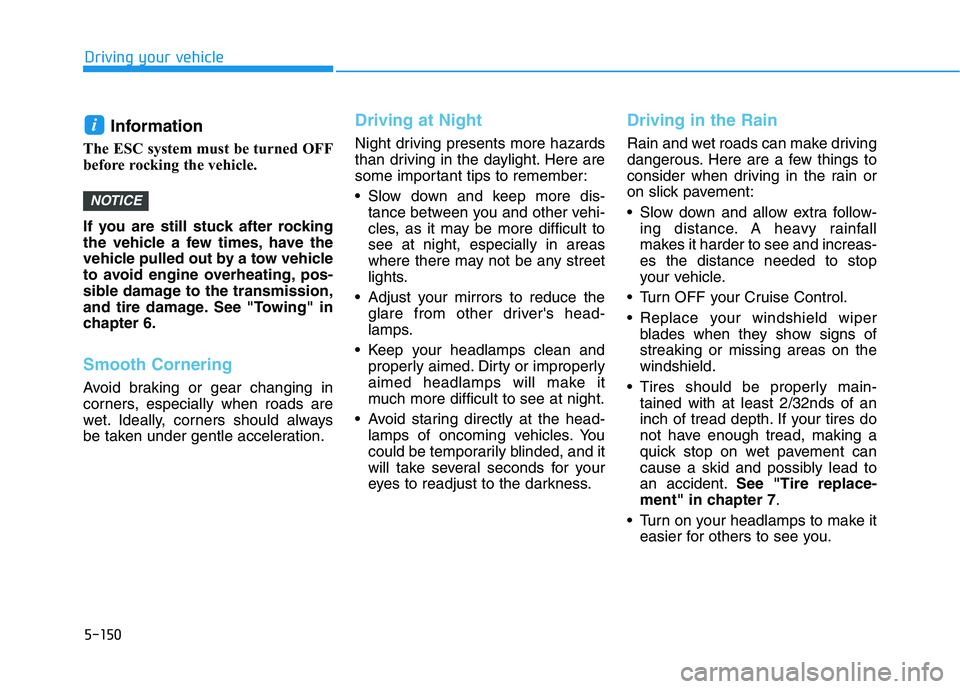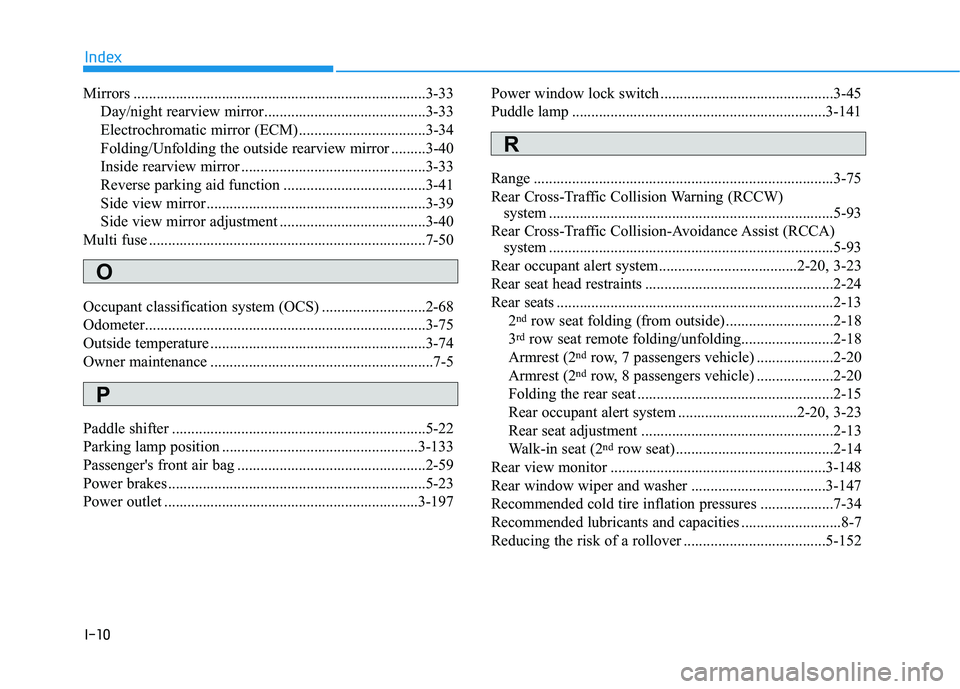Page 420 of 612

5-111
Driving your vehicle
5
LKA System Operation
To activate/deactivate the LKA sys-
tem:
With the ignition switch in the ON
position, press the LKA system
switch located on the instrument
panel on the left hand side of the
steering wheel. The indicator in the
cluster display will initially illuminate
white. This indicates the LKA system
is in the READY but NOT ENABLED
state.
If you press the LKA button again,
the indicator on the cluster display
will go off.
The system helps detect lane
lines and controls the steer-
ing wheel by a camera, there-
fore, if the lane lines are hard
to detect, the system may not
work properly.
Please refer to "Limitations of
the System".
Do not remove or damage the
related parts of LKA system.
You may not hear a warning
sound of LKA system if the
audio volume is high.
If any other warning sound
such as seat belt warning
chime is already generated,
the Lane Keeping Assist
(LKA) system warning may
not sound.
Do not place objects on the
dashboard that reflects light
such as mirrors, white paper,
etc. This may prevent the LKA
system from functioning
properly.
Always have your hands on
the steering wheel while the
LKA system is activated.
The steering wheel is not con-
tinuously controlled so if the
vehicle speed is at a higher
speed when leaving a lane the
vehicle may not be able to be
controlled by the system. The
driver must always follow the
speed limit when using the
system.
If you attach objects to the
steering wheel, the system
may not assist steering or the
hands off alarm may not work
properly. When you tow a trail-
er, make sure that you turn off
the LKA system.
When you tow a trailer, make
sure that you turn off the LKA
system.
OLX2059057L
Page 459 of 612

5-150
Driving your vehicle
Information
The ESC system must be turned OFF
before rocking the vehicle.
If you are still stuck after rocking
the vehicle a few times, have the
vehicle pulled out by a tow vehicle
to avoid engine overheating, pos-
sible damage to the transmission,
and tire damage. See "Towing" in
chapter 6.
Smooth Cornering
Avoid braking or gear changing in
corners, especially when roads are
wet. Ideally, corners should always
be taken under gentle acceleration.
Driving at Night
Night driving presents more hazards
than driving in the daylight. Here are
some important tips to remember:
Slow down and keep more dis-
tance between you and other vehi-
cles, as it may be more difficult to
see at night, especially in areas
where there may not be any street
lights.
Adjust your mirrors to reduce the
glare from other driver's head-
lamps.
Keep your headlamps clean and
properly aimed. Dirty or improperly
aimed headlamps will make it
much more difficult to see at night.
Avoid staring directly at the head-
lamps of oncoming vehicles. You
could be temporarily blinded, and it
will take several seconds for your
eyes to readjust to the darkness.
Driving in the Rain
Rain and wet roads can make driving
dangerous. Here are a few things to
consider when driving in the rain or
on slick pavement:
Slow down and allow extra follow-
ing distance. A heavy rainfall
makes it harder to see and increas-
es the distance needed to stop
your vehicle.
Turn OFF your Cruise Control.
Replace your windshield wiper
blades when they show signs of
streaking or missing areas on the
windshield.
Tires should be properly main-
tained with at least 2/32nds of an
inch of tread depth. If your tires do
not have enough tread, making a
quick stop on wet pavement can
cause a skid and possibly lead to
an accident.See "Tire replace-
ment" in chapter 7.
Turn on your headlamps to make it
easier for others to see you.
NOTICE
i
Page 608 of 612

I-10
Mirrors ............................................................................3-33
Day/night rearview mirror..........................................3-33
Electrochromatic mirror (ECM) .................................3-34
Folding/Unfolding the outside rearview mirror .........3-40
Inside rearview mirror ................................................3-33
Reverse parking aid function .....................................3-41
Side view mirror .........................................................3-39
Side view mirror adjustment ......................................3-40
Multi fuse ........................................................................7-50
Occupant classification system (OCS) ...........................2-68
Odometer.........................................................................3-75
Outside temperature ........................................................3-74
Owner maintenance ..........................................................7-5
Paddle shifter ..................................................................5-22
Parking lamp position ...................................................3-133
Passenger's front air bag .................................................2-59
Power brakes ...................................................................5-23
Power outlet ..................................................................3-197Power window lock switch .............................................3-45
Puddle lamp ..................................................................3-141
Range ..............................................................................3-75
Rear Cross-Traffic Collision Warning (RCCW)
system ..........................................................................5-93
Rear Cross-Traffic Collision-Avoidance Assist (RCCA)
system ..........................................................................5-93
Rear occupant alert system....................................2-20, 3-23
Rear seat head restraints .................................................2-24
Rear seats ........................................................................2-13
2
ndrow seat folding (from outside) ............................2-18
3rdrow seat remote folding/unfolding........................2-18
Armrest (2ndrow, 7 passengers vehicle) ....................2-20
Armrest (2ndrow, 8 passengers vehicle) ....................2-20
Folding the rear seat ...................................................2-15
Rear occupant alert system ...............................2-20, 3-23
Rear seat adjustment ..................................................2-13
Walk-in seat (2
ndrow seat) .........................................2-14
Rear view monitor ........................................................3-148
Rear window wiper and washer ...................................3-147
Recommended cold tire inflation pressures ...................7-34
Recommended lubricants and capacities ..........................8-7
Reducing the risk of a rollover .....................................5-152
Index
R
P
O